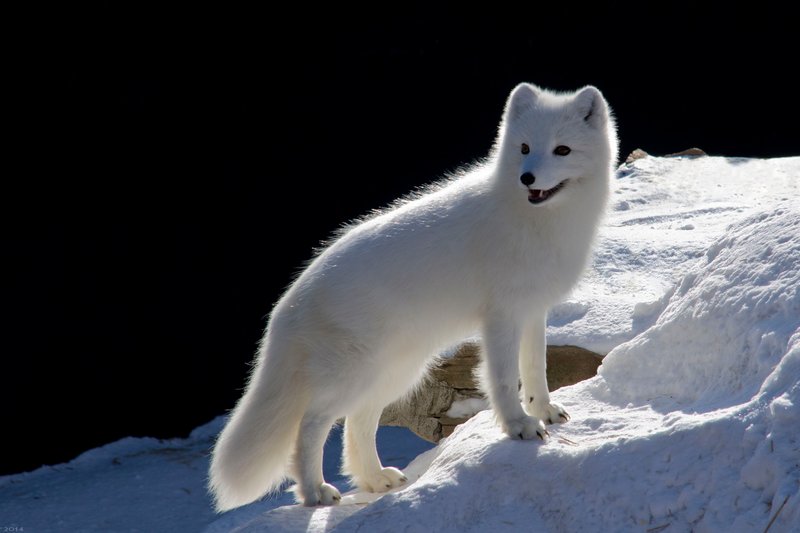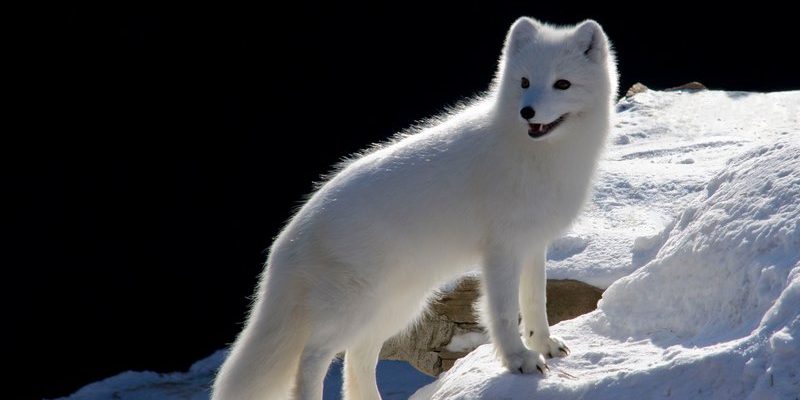
Picture this: the Arctic fox, one of nature’s true survivors, has adapted to some of the harshest climates on Earth. However, climate change is slowly melting away their frozen habitat, leaving them with fewer hunting grounds and more competition for resources. This blog dives deep into the status of the Arctic fox, exploring the threats they face and the conservation efforts underway to protect them. Let’s shed some light on this fascinating creature and why we should care about its future.
Understanding the Arctic Fox’s Habitat
The Arctic fox is perfectly designed for life in extreme cold. Their thick fur not only keeps them warm but also changes color with the seasons—white in winter and a mix of brown and gray in summer. This clever adaptation helps them blend into their surroundings, making it easier to hunt for lemmings and other small animals they rely on for food.
However, their habitat is not just icy terrain. These foxes inhabit vast areas in Alaska, Canada, Greenland, Norway, Sweden, and Russia. The Arctic tundra is a fragile ecosystem, and any changes can have a dramatic impact on the species living there. As temperatures rise and ice melts, the very fabric of their home is unraveling, raising concerns about their survival.
The Threats Facing Arctic Foxes
So, what exactly is putting these foxes at risk? Honestly, there are a few critical factors at play. Climate change is the big player. As mentioned, warming temperatures lead to melting ice and shifting ecosystems. This affects the availability of prey and exposes Arctic foxes to more predators, like red foxes, that are encroaching on their territory.
Another pressing issue is habitat loss. As humans continue to explore and exploit Arctic regions for oil, gas, and minerals, the fox’s habitat shrinks. This encroachment disrupts their natural behavior and limits their access to food sources. You might be surprised to learn that roadside development and increased shipping traffic in the Arctic also pose threats to these sensitive animals.
Conservation Status of the Arctic Fox
Currently, the Arctic fox is classified as Least Concern by the International Union for Conservation of Nature (IUCN). This might sound reassuring, but it’s essential to dive deeper. While they’re not endangered globally, local populations can face significant threats. In some regions, like Scandinavia, their numbers are dwindling due to habitat loss and competition with red foxes.
It’s important to note that climate change is a game-changer. If temperatures continue to rise, we may see more populations struggling to survive. The concern is that, without effective conservation measures, these seemingly secure populations may face serious declines in the not-so-distant future.
Conservation Efforts in Action
The good news is that there are dedicated efforts to help protect the Arctic fox. Various wildlife organizations and research groups are working tirelessly to monitor populations and their habitats. These initiatives often include tracking the foxes using GPS collars, which helps scientists gather valuable data about their movements and hunting patterns.
Moreover, conservationists are advocating for protected areas in the Arctic. By creating safe havens where these foxes can live without the threat of habitat destruction, we can help ensure their survival. Additionally, raising awareness about climate change impacts and advocating for sustainable practices can aid in safeguarding their environments.
Community Involvement
Another vital aspect of conservation is community involvement. Local communities in Arctic regions often play a significant role in protecting the Arctic fox. By fostering a sense of stewardship and understanding, people can be motivated to protect these unique animals. Educational programs can help highlight the importance of the Arctic fox in the ecosystem, encouraging people to take action.
How You Can Help Arctic Foxes
You might be wondering what you can do to help. It all starts with spreading awareness. Share information about the Arctic fox and its challenges on social networks. Support organizations that work towards wildlife conservation in the Arctic. Your voice can inspire others to take action.
Practicing sustainable habits in your daily life is another way to contribute. Consider reducing your carbon footprint by using public transport, conserving energy, or participating in local clean-up days. Every little bit helps, and collectively, we can make a significant impact on climate change.
The Role of Research in Conservation
Research plays a critical role in understanding the Arctic fox and its environment. Scientists are continually studying these animals to better comprehend their behavior, health, and adaptations. Understanding the effects of climate change on their habitats can lead to more effective conservation strategies.
For instance, ongoing research into the diets of Arctic foxes can reveal how changes in prey availability affect their health and reproductive success. This information is crucial as it helps inform conservation efforts and policy decisions aimed at protecting both the foxes and their habitat.
The fate of the Arctic fox is tied closely to the health of the Arctic environment. While they have a least concern status, the reality is that they face ever-growing threats that could change that label. Understanding their challenges allows us to appreciate their plight more deeply.
By supporting conservation efforts and raising awareness, we can contribute to the survival of this incredible species. Remember, the Arctic fox isn’t just a cute face in the wild; it’s a crucial part of the ecosystem that needs our help. Let’s work together to ensure a future where Arctic foxes thrive, not just survive.

